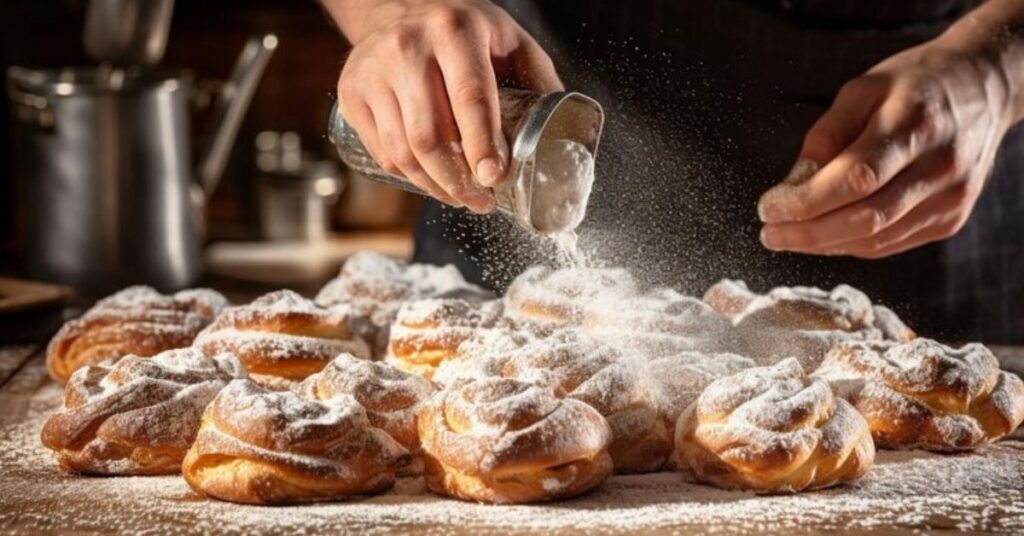Italian bakery delights have captivated taste buds around the globe with their irresistible aroma and mouthwatering flavors. From rustic bread to delicate pastries, Italian baked goods offer a culinary journey steeped in tradition and innovation.
Italian bakery craftsmanship dates back centuries, rooted in a rich culinary heritage characterized by simplicity and quality. Each region of Italy boasts its own unique baked specialties, reflecting local ingredients and cultural influences.
History of Italian Bakery
Origins
The history of Italian baking can be traced back to ancient times, where bread held significant cultural and symbolic importance. Ancient Romans, for instance, were skilled bakers, producing a variety of bread types using techniques that laid the foundation for modern Italian baking.
Evolution
Over the centuries, Italian baking techniques evolved, influenced by trade, conquests, and culinary exchanges. The Renaissance period witnessed a flourish in baking artistry, with the introduction of new ingredients and methods that expanded the repertoire of Italian baked goods.
Traditional Italian Baked Goods
Italian bakery delights encompass a diverse array of bread, pastries, and desserts, each celebrated for its unique taste and texture.
Bread Varieties
Italian bread varieties range from crusty ciabatta and hearty focaccia to soft, chewy pane di casa. These breads are often enjoyed with olive oil, balsamic vinegar, or as an accompaniment to Italian meals.
Pastries and Desserts
From flaky sfogliatelle to creamy tiramisu, Italian pastries showcase a symphony of flavors and textures. Cannoli, biscotti, and panna cotta are just a few examples of beloved Italian desserts enjoyed worldwide.
Ingredients Used in Italian Bakery
The quality of Italian baked goods lies in the simplicity and freshness of their ingredients.
Flour
High-quality flour is the foundation of Italian baking, with varieties like tipo 00 and semolina favored for their texture and flavor.
Yeast
Natural yeast or ‘lievito madre’ is often used to leaven bread, imparting a distinct flavor and aroma to Italian loaves.
Olive Oil
Olive oil adds richness and depth to Italian baked goods, contributing to their characteristic taste and moist texture.
Herbs and Spices
Italian baking often incorporates aromatic herbs like rosemary, thyme, and oregano, enhancing the flavor profile of bread and pastries.
Techniques in Italian Baking
Italian bakers employ time-honored techniques to create artisanal baked goods with exceptional taste and texture.
Fermentation
Long fermentation processes allow flavors to develop fully, resulting in bread with a complex, nuanced taste and airy crumb.
Hand-kneading
Hand-kneading dough is a labor of love in Italian baking, ensuring proper gluten development and texture.
Wood-fired Ovens
Wood-fired ovens impart a smoky flavor and crispy crust to Italian bread, replicating the traditional baking methods of generations past.
Famous Italian Bakeries
Italy is home to renowned bakeries that have become culinary landmarks, attracting visitors from far and wide to savor their delectable creations.
Italian Bakery Around the World
The influence of Italian bakery extends beyond Italy’s borders, with Italian-inspired bakeries found in every corner of the globe, offering a taste of Italy’s culinary legacy.
Health Benefits of Italian Baked Goods
Italian baked goods, when enjoyed in moderation, can offer health benefits due to their simple, wholesome ingredients and minimal processing.
Popular Italian Bakery Recipes
From rustic focaccia to delicate cannoli, Italian bakery recipes are cherished for their authenticity and deliciousness.
Modern Innovations in Italian Bakery
Contemporary Italian bakeries continue to innovate, blending traditional techniques with modern flavors and ingredients to create exciting new offerings.
Cultural Significance of Italian Bakery
Italian bakery plays a central role in Italian culture, serving as a gathering place for communities to socialize and celebrate life’s moments.
Tips for Visiting an Italian Bakery
When visiting an Italian bakery, immerse yourself in the sensory experience, savoring the aromas and flavors of freshly baked goods.
Sustainable Practices in Italian Bakeries
Many Italian bakeries are embracing sustainable practices, from sourcing local ingredients to reducing food waste, in alignment with Italy’s culinary tradition of respect for the environment.
Challenges Faced by Italian Bakeries
Despite their enduring popularity, Italian bakeries face challenges such as rising ingredient costs and changing consumer preferences, prompting them to adapt and innovate.
Conclusion
Italian bakery is more than just food—it’s a celebration of tradition, craftsmanship, and the joy of sharing simple pleasures with loved ones. Whether enjoying a crusty loaf of bread or a decadent pastry, every bite tells a story of centuries-old culinary heritage.
FAQs
Are Italian bakery products healthy?
Italian bakery products can be healthy when consumed as part of a balanced diet, as they often feature simple, natural ingredients.
What makes Italian bread different from other types of bread?
Italian bread is distinguished by its use of high-quality flour, natural yeast, and long fermentation processes, resulting in a unique taste and texture.
Why are wood-fired ovens preferred in Italian baking?
Wood-fired ovens impart a smoky flavor and crispy crust to bread, replicating the traditional baking methods of generations past.
What are some must-try Italian pastries?
Some must-try Italian pastries include cannoli, tiramisu, sfogliatelle, and biscotti, each offering a delightful taste of Italy’s culinary heritage.
How can I recreate Italian bakery flavors at home?
To recreate Italian bakery flavors at home, focus on using high-quality ingredients, mastering traditional techniques like hand-kneading, and experimenting with authentic recipes.







